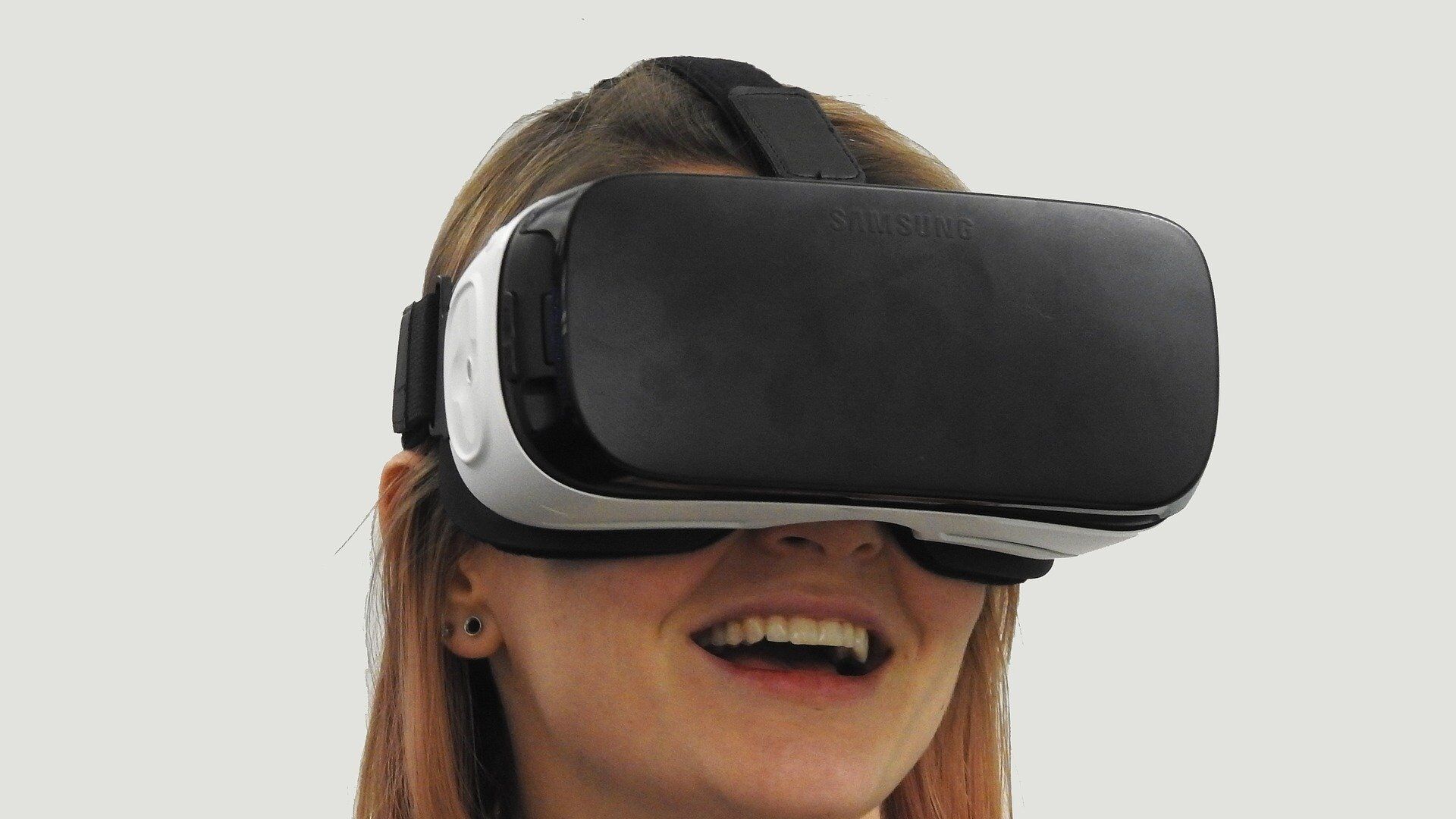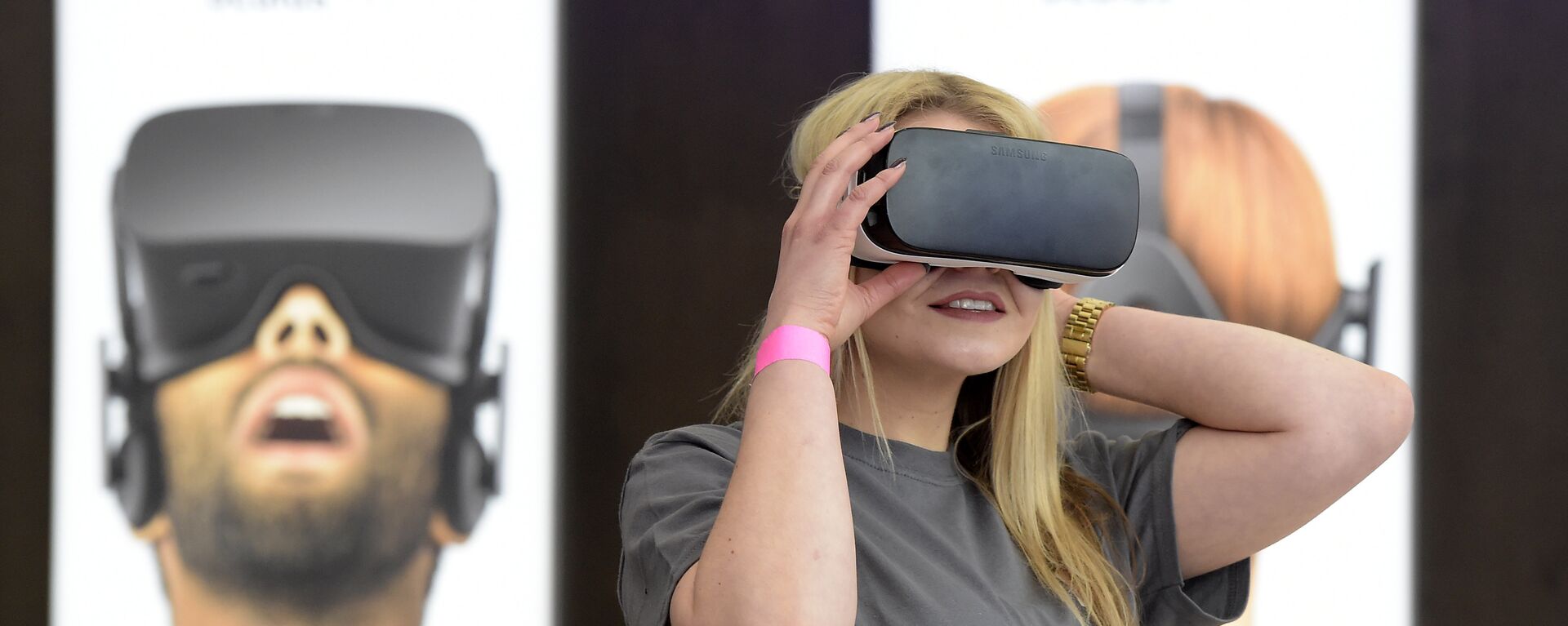https://sputnikglobe.com/20220922/another-social-media-giant-is-making-its-play-for-the-metaverse-future-1101108436.html
Another Social Media Giant is Making its Play for the Metaverse Future
Another Social Media Giant is Making its Play for the Metaverse Future
Sputnik International
ByteDance, the parent company of TikTok, purchased the Chinese VR manufacturer Pico in 2021. Focused on enterprise headsets and the Chinese consumer market, it... 22.09.2022, Sputnik International
2022-09-22T22:37+0000
2022-09-22T22:37+0000
2022-09-22T22:37+0000
science & tech
tiktok
bytedance
vr
meta
https://cdn1.img.sputnikglobe.com/img/105298/85/1052988571_0:0:1920:1080_1920x0_80_0_0_e693b54e710125800ddcb0ce31524c45.jpg
ByteDance, the company that owns popular social video sharing app TikTok, announced a new virtual reality headset on Thursday, giving Meta* its first real competition in the VR space since it took over the market with the Oculus Quest stand-alone headset in 2019.Pico has been making stand-alone headsets for even longer than Meta has, but they previously either lacked features to compete with Meta’s offerings or were focused on the enterprise market. They also avoided selling them in the West until recently.That changed in May with the launch of the Pico Neo 3 Link, which was essentially a clone of the Meta Quest 2, with a similar price point and feature set. It was also their first foray out of Asia, with the headset being sold in Europe for the first time. Their new headset, the Pico 4, was announced in a video stream and press release on Thursday and goes one step further by beating the Meta Quest 2 on paper in terms of specs and features while keeping the price point lower.The Pico 4 will be released on October 18th in 13 European territories, along with Japan and South Korea. A Singapore and Malaysia launch is expected later this year, and its release in China will be announced on September 27. The device will launch with two variants in Europe, a 128GB model for €429 and a 256GB model for €499. The Quest 2 starts at €449 in Europe, with its 256GB model coming in at €549. No US release has been announced, though a job posting at Pico and FCC regulatory filings indicate that it may happen eventually.The most striking change from the Neo 3 Link and Meta Quest 2 is the much slimmer design. The Pico 4 uses pancake lenses and moves the battery to the back of the user’s head, resulting in a much slimmer (35.8mm thick at its thinnest part), lighter, and balanced headset. The Pico 4 will weigh a mere 295 grams without the strap, with Pico comparing it to the weight of a soda can. The Quest 2 weighs 503 grams without its strap.Most headsets use older fresnel style lenses and keep the battery on the front of the head behind the display. Not only will the new design be lighter and more comfortable, separating the battery from the rest of the headset should result in cooler running temperatures for the CPU.The display is also getting an upgrade, increasing to a per-eye resolution of 2160 x 2160, compared to the Quest 2’s 1832 x 1920. Pico also claims that the field of view of the headset has been increased, jumping to 105° compared to just 89° with the Quest 2.While both the Meta Quest 2 and the Pico 4, along with the Pico 3 and Meta’s upcoming Quest Pro, all use the same Qualcomm Snapdragon XR2 chipset, ByteDance is increasing the RAM of the Pico 4 to 8GB (Quest 2 and the Pico Neo 3 have 6GB of RAM).The controllers are also getting an upgrade, moving the tracking ring down and over the hands of the user, which should allow the user to move their hands closer together without tracking interference. The design is reminiscent of the newly revealed Playstation VR2 controllers. Along those same lines, Pico says it upgraded the vibration feedback of the controllers to allow more precise emulation of physical actions. Whether the controllers will match those seen in the far more expensive Playstation VR2 system remains to be seen.Finally, the Pico 4 will also include motorized and more precise interpupillary distance (IPD) adjustment, supporting eye distances of 62 - 72mm. That may not seem like a big deal, but if a VR headset’s lenses are not lined up with the user’s eyes, it can cause double vision and intense nausea. The Quest 2 has only three IPD adjustment levels, and while it is close enough for most people, those with abnormal eye distances were essentially unable to use the headset. The Pico 4 IPD system should open up the hardware to more people.ByteDance also announced the Pico 4 Pro at the same event, though details are scarce on that device. It will include face and eye tracking, which should increase the price significantly. Meta’s Quest Pro, like the Pico 4 Pro, will also include pancake lenses and face and eye tracking, but that device is expected to cost “well-over” $800, according to a Meta insider. It will be interesting to see how the Pico 4 Pro compares price-wise when it is revealed, possibly at the Chinese Pico event later this month.Meta has been dominating the VR space since the release of the original Quest in 2019. That was the first consumer standalone headset to include inside-out tracking, six degrees of freedom (6DoF) for both the headset and controllers and came in under $500. The Quest 2 was released in 2020 and initially launched for $300 (Meta increased the price this year, raising the cheapest model to $400).As of July, it was estimated that Meta had sold just under 15 million Quest 2 headsets, making it by far the most popular consumer headset of all time. It shifted the VR industry from one focused on headsets tethered to a PC to standalone devices like the Quest. Meta has had virtually no competition since, especially in the West.This was in large part because Meta sold the Quest 2 with a huge subsidy, losing money on every headset sold. While Meta certainly hopes that software sales will offset that, it was also designed to grab as much market share as possible in an industry that was still growing. No other VR companies could hope to compete with the price of the Quest 2, because few could afford to sell at a loss.ByteDance is the first VR competitor of Meta that has the financial backing and desire to compete with the social media giant on an even playing field. If the Pico Neo 3 Link was the first shot in the Metaverse war, then the Pico 4 and 4 Pro is the first real battle. Meta has the first mover advantage, but it is now facing a well-funded, fast-moving competitor that, as Meta has with Facebook, has an in-built advertising platform through a major social media platform.If the metaverse is set to be an internet-level change to how we work and live, as VR industry proponents say, this battle could set the stage for how we interact with it and who builds it.*Meta is a company banned in Russia
https://sputnikglobe.com/20220503/new-tech-advancement-could-pave-way-for-worlds-first-vr-kissing-booth-says-media-1095237889.html
https://sputnikglobe.com/20191121/video-legendary-half-life-returns-in-vr-mode-to-reveal-a-secret-behind-occupation-of-city-17-1077371413.html
Sputnik International
feedback@sputniknews.com
+74956456601
MIA „Rossiya Segodnya“
2022
News
en_EN
Sputnik International
feedback@sputniknews.com
+74956456601
MIA „Rossiya Segodnya“
Sputnik International
feedback@sputniknews.com
+74956456601
MIA „Rossiya Segodnya“
science & tech, tiktok, bytedance , vr, meta
science & tech, tiktok, bytedance , vr, meta
Another Social Media Giant is Making its Play for the Metaverse Future
ByteDance, the parent company of TikTok, purchased the Chinese VR manufacturer Pico in 2021. Focused on enterprise headsets and the Chinese consumer market, it started making inroads in the West with the release of the Pico Neo 3 Link in Europe earlier this year.
ByteDance, the company that owns popular social video sharing app TikTok,
announced a new virtual reality headset on Thursday, giving Meta* its first real competition in the VR space since it took over the market with the Oculus Quest stand-alone headset in 2019.
Pico has been making stand-alone headsets for even longer than Meta has, but they previously either lacked features to compete with Meta’s offerings or were focused on the enterprise market. They also avoided selling them in the West until recently.
That changed in May with the launch of the Pico Neo 3 Link, which was essentially a clone of the Meta Quest 2, with a similar price point and feature set. It was also their first foray out of Asia, with the headset being sold in Europe for the first time. Their new headset, the Pico 4, was announced in a video stream and press release on Thursday and goes one step further by beating the Meta Quest 2 on paper in terms of specs and features while keeping the price point lower.
The Pico 4 will be released on October 18th in 13 European territories, along with Japan and South Korea. A Singapore and Malaysia launch is expected later this year, and its release in China will be announced on September 27. The device will launch with two variants in Europe, a 128GB model for €429 and a 256GB model for €499. The Quest 2 starts at €449 in Europe, with its 256GB model coming in at €549. No US release has been announced, though
a job posting at Pico and
FCC regulatory filings indicate that it may happen eventually.
The most striking change from the Neo 3 Link and Meta Quest 2 is the much slimmer design. The Pico 4 uses pancake lenses and moves the battery to the back of the user’s head, resulting in a much slimmer (35.8mm thick at its thinnest part), lighter, and balanced headset. The Pico 4 will weigh a mere 295 grams without the strap, with Pico comparing it to the weight of a soda can. The Quest 2 weighs 503 grams without its strap.
Most headsets use older fresnel style lenses and keep the battery on the front of the head behind the display. Not only will the new design be lighter and more comfortable, separating the battery from the rest of the headset should result in cooler running temperatures for the CPU.
The display is also getting an upgrade, increasing to a per-eye resolution of 2160 x 2160, compared to the Quest 2’s 1832 x 1920. Pico also claims that the field of view of the headset has been increased, jumping to 105° compared to just 89° with the Quest 2.
While both the Meta Quest 2 and the Pico 4, along with the Pico 3 and Meta’s upcoming Quest Pro, all use the same Qualcomm Snapdragon XR2 chipset, ByteDance is increasing the RAM of the Pico 4 to 8GB (Quest 2 and the Pico Neo 3 have 6GB of RAM).
The controllers are also getting an upgrade, moving the tracking ring down and over the hands of the user, which should allow the user to move their hands closer together without tracking interference. The design is reminiscent of the newly revealed Playstation VR2 controllers. Along those same lines, Pico says it upgraded the vibration feedback of the controllers to allow more precise emulation of physical actions. Whether the controllers will match those seen in the far more expensive Playstation VR2 system remains to be seen.
Finally, the Pico 4 will also include motorized and more precise interpupillary distance (IPD) adjustment, supporting eye distances of 62 - 72mm. That may not seem like a big deal, but if a VR headset’s lenses are not lined up with the user’s eyes, it can cause double vision and intense nausea. The Quest 2 has only three IPD adjustment levels, and while it is close enough for most people, those with abnormal eye distances were essentially unable to use the headset. The Pico 4 IPD system should open up the hardware to more people.

21 November 2019, 23:54 GMT
ByteDance also announced the Pico 4 Pro at the same event, though details are scarce on that device. It will include face and eye tracking, which should increase the price significantly. Meta’s Quest Pro, like the Pico 4 Pro, will also include pancake lenses and face and eye tracking, but that device is expected to cost “well-over” $800, according to a Meta insider. It will be interesting to see how the Pico 4 Pro compares price-wise when it is revealed, possibly at the Chinese Pico event later this month.
Meta has been dominating the VR space since the release of the original Quest in 2019. That was the first consumer standalone headset to include inside-out tracking, six degrees of freedom (6DoF) for both the headset and controllers and came in under $500. The Quest 2 was released in 2020 and initially launched for $300 (Meta increased the price this year, raising the cheapest model to $400).
As of July, it was estimated that Meta had sold just under 15 million Quest 2 headsets, making it by far the most popular consumer headset of all time. It shifted the VR industry from one focused on headsets tethered to a PC to standalone devices like the Quest. Meta has had virtually no competition since, especially in the West.
This was in large part because Meta sold the Quest 2 with a huge subsidy, losing money on every headset sold. While Meta certainly hopes that software sales will offset that, it was also designed to grab as much market share as possible in an industry that was still growing. No other VR companies could hope to compete with the price of the Quest 2, because few could afford to sell at a loss.
ByteDance is the first VR competitor of Meta that has the financial backing and desire to compete with the social media giant on an even playing field. If the Pico Neo 3 Link was the first shot in the Metaverse war, then the Pico 4 and 4 Pro is the first real battle. Meta has the first mover advantage, but it is now facing a well-funded, fast-moving competitor that, as Meta has with Facebook, has an in-built advertising platform through a major social media platform.
If the metaverse is set to be an internet-level change to how we work and live, as VR industry proponents say, this battle could set the stage for how we interact with it and who builds it.
*Meta is a company banned in Russia



